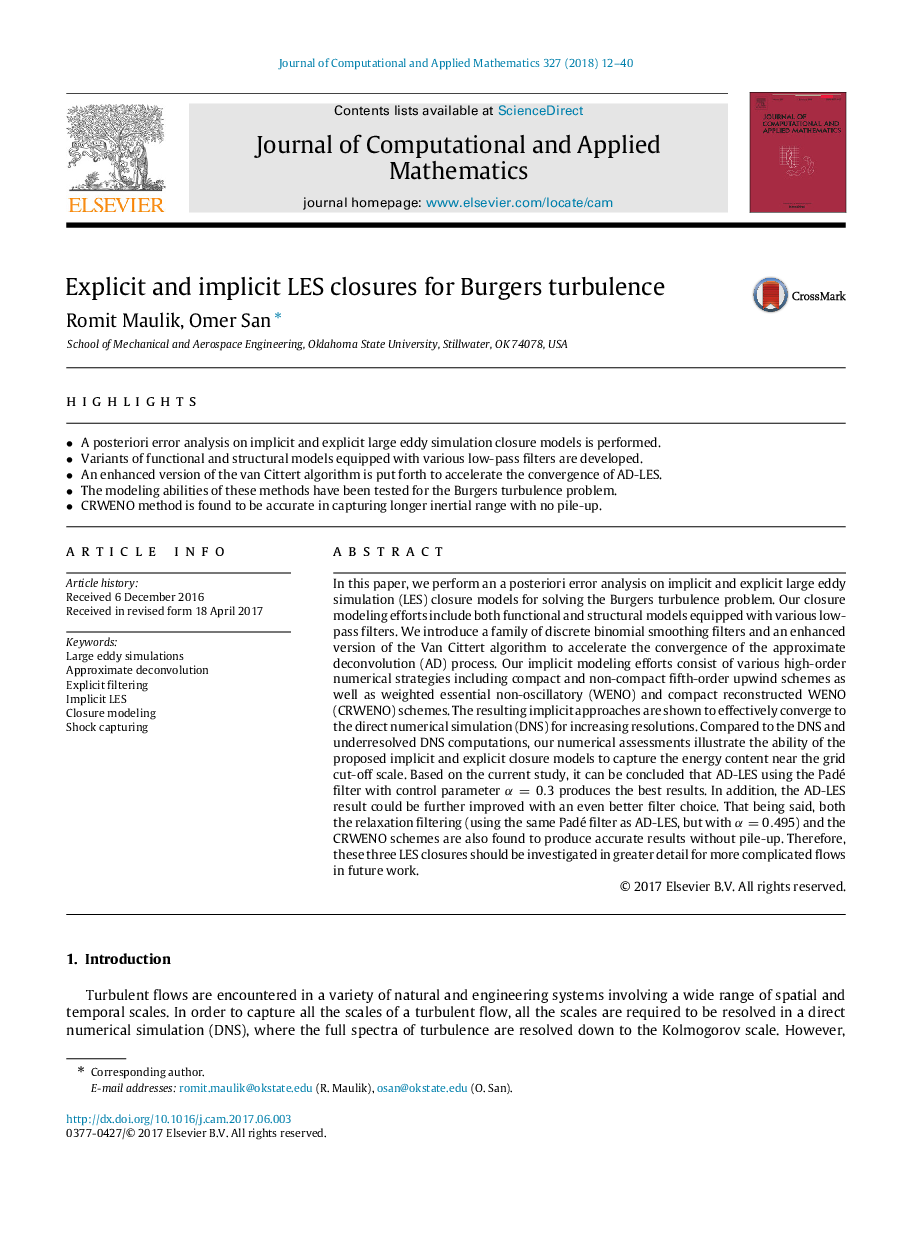| Article ID | Journal | Published Year | Pages | File Type |
|---|---|---|---|---|
| 5776161 | Journal of Computational and Applied Mathematics | 2018 | 29 Pages |
Abstract
In this paper, we perform an a posteriori error analysis on implicit and explicit large eddy simulation (LES) closure models for solving the Burgers turbulence problem. Our closure modeling efforts include both functional and structural models equipped with various low-pass filters. We introduce a family of discrete binomial smoothing filters and an enhanced version of the Van Cittert algorithm to accelerate the convergence of the approximate deconvolution (AD) process. Our implicit modeling efforts consist of various high-order numerical strategies including compact and non-compact fifth-order upwind schemes as well as weighted essential non-oscillatory (WENO) and compact reconstructed WENO (CRWENO) schemes. The resulting implicit approaches are shown to effectively converge to the direct numerical simulation (DNS) for increasing resolutions. Compared to the DNS and underresolved DNS computations, our numerical assessments illustrate the ability of the proposed implicit and explicit closure models to capture the energy content near the grid cut-off scale. Based on the current study, it can be concluded that AD-LES using the Padé filter with control parameter α=0.3 produces the best results. In addition, the AD-LES result could be further improved with an even better filter choice. That being said, both the relaxation filtering (using the same Padé filter as AD-LES, but with α=0.495) and the CRWENO schemes are also found to produce accurate results without pile-up. Therefore, these three LES closures should be investigated in greater detail for more complicated flows in future work.
Keywords
Related Topics
Physical Sciences and Engineering
Mathematics
Applied Mathematics
Authors
Romit Maulik, Omer San,
